By Prof. A.V. Narasimha Murthy
When I was browsing through some literature on Prof. H. M. Shankaranarayana Rao, a write-up in Kannada with the title ‘Unwin of Kannada’ written by M. Satyanarayana Rao of Geetha Book House-fame, attracted my attention. A great Publisher can understand and appreciate another equally great Publisher more intimately.
For the benefit of those who are not familiar with Unwin, I may add that Sir Stanley Unwin of England was one of the Publishers known all over the world for publishing books of everlasting value written by distinguished authors. For want of a better title, I simply copied that title to pay homage to Prof. H. M. Shankaranarayana Rao, the architect of Sharada Mandira, a Kannada Publishing House which has made Mysuru City proud.
Though he was elder to me by two decades, I had the privilege of knowing him fairly intimately. Placing Prof. Shankaranarayana Rao on the same pedestal occupied by Unwin is perhaps the best tribute to Prof. Rao.
Prof. Shankaranarayana Rao (1913-1997) was born at Harihara, a place of great antiquity sanctified by Harihareswara temple built by the Hoysalas eight hundred years ago. Shankaranarayana is another name for Harihara, a composite deity which establishes the identity of Siva and Vishnu, a wonderful concept. Instead of continuing as the priest of this temple, Shankaranarayana Rao chose to get modern College education. Any other person would not have even dreamt of College education when poverty was staring at him. But the young Rao had a dream of his own.
Weekly meals
In those days, the concept of weekly meals was very popular among poor students. Weekly meals did not mean taking food once in a week but eating each day at a different house in turn with the consent of the owner of the house. In fact most of the distinguished persons have grown under this umbrella of weekly meals.
Shankaranarayana Rao had arranged for weekly meals for all the seven days of the week. He joined the Maharaja’s College and automatically got 50% exemption from the payment of the tuition fee. But Rao could not afford to pay the remaining 50%. He met Principal Prof. J.C. Rollo (Englishman) and told him that he is poor and surviving on weekly meals.
Prof. Rollo understood this as eating once a week and asked the College Manager if this is true and the latter replied ‘Yes, Sir.’ And Prof. Rollo granted Rao exemption from the payment of the remaining 50% of the College fee. This enabled Shankaranarayana Rao to prosecute his College education. This incident sounds like a fairy tale to the students of the present generation.
H. M. Shankaranarayana Rao had the good fortune of getting a Master’s degree in Kannada literature under the luminaries like B.M.Sri, Ti.Nam.Sri, T. S. Venkannaiah, A. R. Krishnasastry, DLN, M. H. Krishna, Srikantha Sastri, Rallapalli, M. Hiriyanna and others. His friends like Paramesvara Bhatta and K. Venkataramappa gave him good company. After some initial struggle, Shankaranarayana Rao joined the Sarada Vilas College as a lecturer in Kannada, became a Professor and finally emerged as the Principal of that College.
During his leadership, Sarada Vilas College attained name and fame as a great centre of education and became popular. H. M. Shankaranarayana Rao paid great tribute to the management of this College by saying: ‘This is perhaps the only College where the Principal and the staff are allowed to work without any interference from the Management.’
Man of innovations
Prof. Shankaranarayana Rao was a man of innovations. His creative mind always aspired for new things to help the society. Once he wrote a long essay in Kannada and wanted to get it published. Instead of going and waiting at the doors of the Publishers, he thought of starting a Publishing House of his own and serve Kannada.
At the suggestion of Ti.Nam.Sri, it came to be called ‘Sharada Mandira’ (House of Goddess Sharada, the presiding deity of Knowledge). From that day onwards neither Sharada Mandira nor Shankaranarayana Rao looked back and Rao became a Kannada Publisher.
In the beginning, he published his own books and began approaching other authors who came in search of Shankaranarayana Rao with a request to publish their books. Rao has published over four hundred titles of great authors including A.R. Krishna Sastry, Veesi, Gorur, Ti.Nam.Sri, DLN, K. Venkataramappa, Pu.Thi.Na, Murthy Rao, Krishnamurthy, Ashwattha, Tarasu etc. Thus practically all illustrious writers of that period have found a place in Sharada Mandira. This is not a mean achievement.
Scholarly monograph on
Harihareswara temple
Prof. Shankaranarayana Rao enriched Kannada literature by publishing his own 25 books. As a student of History and Epigraphy, I have always admired his scholarly monograph on Harihareswara temple at Harihara. I had suggested to him to get it translated into English so that non-Kannadigas would be benefitted by it.
Another virtue which has endeared Prof. Rao to the Authors and Publishers is the way he respected the authors. He believed that an author is the focal point of the literary world and hence he should be respected and rewarded properly. He started the practice of giving royalty to authors in a single lumpsum. In addition he has helped many authors by giving financial help in times of needs such as marriage, buying a site or completing a house etc. This showed his concern for the authors who were the backbone of the Publishing industry.
In this connection I may quote what Prof. Rao told me once. ‘I very much desire to give you royalty; please give me a manuscript.’ Unfortunately, I could not do it and the loss is mine.
Prof. H. M. Shankaranarayana Rao was not merely a great Publisher but a great scholar in Kannada. He has written more than 25books in Kannada including independent works and edited old classics. Fortunately, many of his works became text books and the students were the real beneficiaries. His beautiful Kannada handwriting has been admired by his contemporary scholars. Some twenty years ago, I received a beautifully written post card from him.
It seems he was reading Ranna and at one place, he saw a phrase ‘posa-pon’ meaning new gold and it did not suit the context. In my book on coins of Karnataka, I had indicated that ‘pon’ is a gold coin and this meaning suited his context, as newly minted gold coins. He congratulated me for this interpretation.
I used to meet Rao occasionally in the evenings at the first floor of the famous Geetha Book House at K. R. Circle. Though it was a small place surrounded by books on all sides, it was made a pleasant place by the brothers Satyanarayana Rao, Gururaja Rao and Gopalakrishna. Prof. Rao, Venkataramappa, HSK, H. M. Nayak used to be there with pleasant conversation on literature, men and matters laced with generous comments without malice to anybody. Light eatables were always there. I was the youngest of the lot and the horizon of my knowledge was broadened greatly. Alas! Such meetings are not held nowadays either in Colleges or in homes or when friends meet. Now it has passed into the pages of history.
In the meantime, it is our duty to salute and pay homage to Shankaranarayana Rao who has made Mysuru city proud by his Publishing House Sharada Mandira.



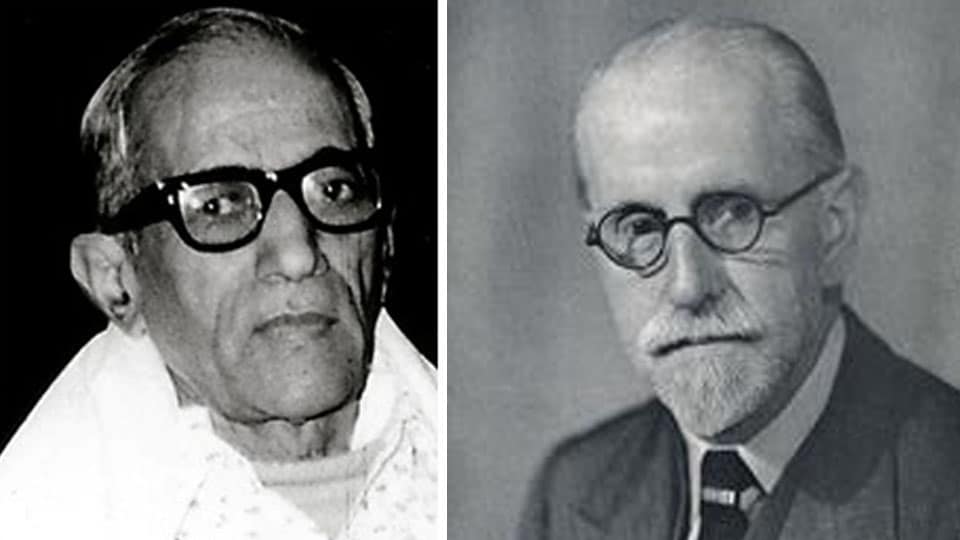
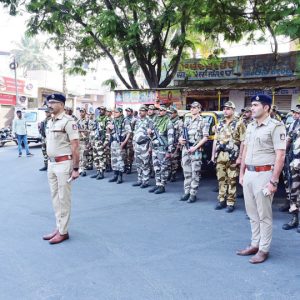
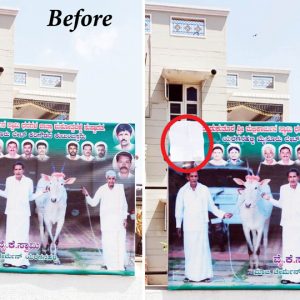
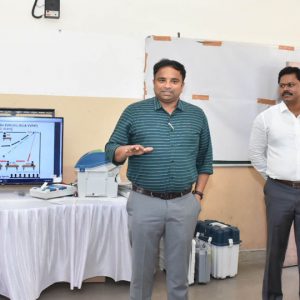
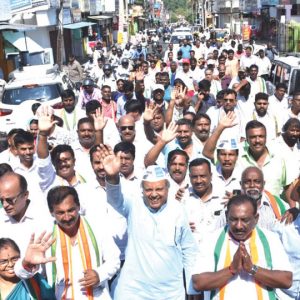
Sir a very interesting piece, I also have had the privilege of visiting the small, first floor room strewn with books, how I wish I could do it again!!
As student sof the college where HM Shankaranarayana Rao worked, we used to see him daily, when he used to pass through our lecture hall just before the lunch time, every day. We knew of his publishing interest even then.
Prof J C Rollo, the name suggests , was not an Englishman but a person of Scottish-origin.
It was not true that the management of the college allowed the principal and the staff to work without any interference, no private college did even at that time, and this college was no exception. from what I heard from the senior teaching staff. Perhaps the management left him alone.
Adding to the bove. ‘Pon’ in Tamil means gold, that simple!
Did not realise that he was the brother of M. Sathyanarayana Rao, who started the Geetha Book House in the Landdowne Building, and soon realised like many that the space there was not enough for an expanding business. Hence the reason for shop owners, who wanted to expand their business, deserting Landdowne Building. To me and many others Sathyanarayana Rao, was better known, as the English Lecturer in National Institute of Engineering, and served that institution well until retirement. He was elected to the Mysore Legislative Council, many times from the teachers’ constituency, and was always of help to any student of the above institution who approached him. He made a success of selling books, which was rare in those days!
Those days of Sarada Vilas Collge! ShankaraNarayana Rao was a familiar face around the College. So was S.N Shankar, the husband of Triveni, the famous novelist. Prof VenkataRao of Chemistry, lived in the College, setting aside his pension and part of his salary to help poor students. I too agree, that every private college then interfered with the staff , at the time of their appointment or promotion. That has been the case since then. YThe Yuvaraja Collge too, a government institution had a great reputation with fine teachers.
“Any other person would not have even dreamt of College education when poverty was staring at him”, This is a sweeping statement. I coud think think of more than a dozen persons, to who, poverty was not a barrier. Srinivasa Ramanujam , the famous mathematician, who suffered from poverty achieved his success in mathematics. Generous families who themselves were not rich provided weekly meals for poor students in those days. That was the munificence of Mysore ( the city and state) in those days.
Corrections of typos : College, Ramanujan. My laptop has problems with the letter “e”!
Yet another product of that great Maharaja’s College! In the annals of its history, Prof J C Rollo, the Scotsman (Scots were very good in education), and were very accomplished in English literature. Prof J C Rollo acquitted himself well in those days of freedom movement, as a British.
Tha late 1950s particularly were arguably the best years for private colleges like Sarada Vilas College in Mysore, and Vijaya College in Bangalore , as both were run very efficiently by their founder-principals. They never let the management to interfere to play the politics much. There were politics and interference to a tolerable degree, though Prof Shankaranarayana Rao was at the right place in building his career in those days. He found his success as a publisher too. M. Sathyanarayana Rao, who established the Geetha Book House, was also a product of Maharaja’s College, besides being an lecturer in English at the NIE.
Private Colleges like the above 2, had to compete with the government colleges in Mysore and Bangalore, which had excellent reputation, with stalwarts like G P Rajaratnam teaching their subjects. Yet, there was Gopalakrishna Adiga a renowned Kannada poet, in St Philomena’s College , teaching English, and I had heard students enrolling there to be taught by him. The late 1950s were hence the best period, for college education.
Mysore and Bangalore were the cities providing good atmosphere for college education. They were liveable cities too.
As for poverty, the adversity. Shakespeare said: “Sweet are the uses of adversity, Which, like the toad, ugly and venomous,Wears yet a precious jewel in his head; And this our life, exempt from public haunt,Finds tongues in trees, books in the running brooks,Sermons in stones, and good in every thing.”
They were the days of sweet memories.
For the benefit of those who are not familiar with Unwin”, really, professor? Why is that you are not aware of something called : ‘Google’, and search using this wonderful search engine produces a better story than yours about Sir Stanley Urwin. Then there is a factual mistake there too. Sir Stanley Urwin’s publishing house was called Allen and Urwin, and any one who has read any paperback knows this! But then, these ‘professors’ think they know best!
“During his leadership, Sarada Vilas College attained name and fame as a great centre of education and became popular”
The good professor , it appears, does not know about this College history well. This College became famous even in late 1950s because of 4 reasons. 1. Its principal was a founder, and when students enrolled in the College, they did so, recommended by their parents, who knew the principal well. The principal , hence, every student well, and there was no student unrest of any kind. 2. Unlike the government colleges in Mysuru then, this College was compact in its size, and students hence had many friends, most of them they knew previously in high schools. Hence, there was good camaraderie. 3. The lecturers and professors really cared for students. Professors like Venkata Rao, Subba Bhatta, Parameshwaran, were retired professors from famed colleges like the Central College, and hence brought with them decades of experience in teaching their subjects of Chemistry and Physics. Ofcourse, as mentioned by a poster above, there were lecturers like S.N.Shankar, who were good teachers and were easily approachable. 4. The office was manned by a core staff of just a few , who also knew students well, and that helped students to approach them easily, if they had any administration-related issues.
” it is our duty to salute and pay homage”
Whilst, we can pay homage to him for his achievement; it is not out of our duty at all. That is too presumptive.